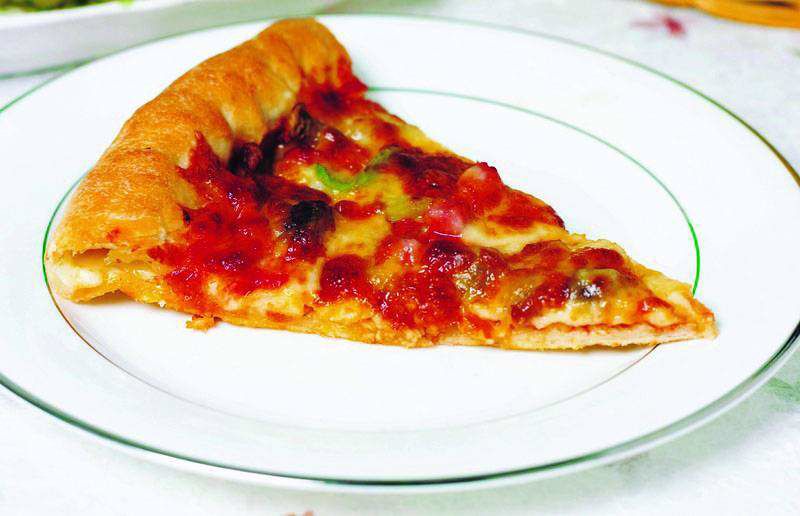Wedge-shaped foods more difficult to track
Published 5:00 am Thursday, August 17, 2006

- Wedge-shaped foods more difficult to track
Think back to geometry class and youll probably be able to figure out the formula for the volume of a cube or even a sphere. But what about a wedge?
According to researchers from Tennessee State University, consumers have trouble estimating the size of wedge-shaped foods even when given measurement tools.
Trending
The danger, of course, is that many of the foods that are highest in sugar, calories and saturated fat namely pies, cakes and pizza come in wedge-shaped servings. Dietitians helping clients track calories have found those shapes give dieters the most trouble.
The researchers gave test subjects a ruler and a new adjustable wedge, designed to help dieters estimate the size of wedge-shaped portions, and asked them to measure a variety of pizza, cake and pie slices. On average, the test subjects underestimated the amount of pizza or pie in the samples by about 20 percent but overestimated the amount of cake by the same amount.
The study was designed to test the usefulness of the ruler or adjustable wedge in estimating portion size. The researchers said estimates might have been even further off if the consumers had consumed the foods and were then asked to recall the portion size later.
While most consumers will limit themselves to a single slice of cake or pie for dessert, pizza has become a staple in the American diet, and few people stop at a single slice.
According to a recent analysis from the Center for Science in the Public Interest, a single slice of Dominos hand-tossed pepperoni pizza has the same number of calories and grams of fat as a McDonalds Egg McMuffin, and a slice of Pizza Huts Stuffed Crust Meat Lovers pizza is the equivalent of eating a Quarter Pounder.
But while most people wouldnt eat a second burger, they generally reach for a second or third slice of pizza. Pizza has become a $30 billion industry offering consumers a nearly infinite variety of sizes, crusts and toppings that makes estimating portion size virtually impossible.
Trending
For example, Pizza Hut cuts most of their large pizzas into slices that measure only 3 1/2 inches at their widest, weighing about 3.3 ounces a piece, according to the report. Yet a much wider slice of a thin crust pizza offered by the chain at the time of study, the Big New Yorker, weighed about 6 ounces. That difference in size for a regular cheese pizza adds another 160 calories and four grams of fat per slice.
Adding toppings to the pizza can exacerbate the problem.
More cheese on your pizza means more crust in your arteries, said Jayne Hurley, a nutritionist who conducted the CSPI analysis. The saturated fat in the carpet of cheese is one of pizzas biggest problems. Adding fatty meats just makes matters worse.
Meat toppings, such as pepperoni or sausage, add significant amounts of sodium as well as saturated fat. The study found veggie pizzas offered by Pizza Hut or Papa Johns outlets had less cheese than a plain cheese pizza and the added benefit of vegetables. But other chains actually add more cheese to their veggie pies.
Many of the pizza chains list nutritional data on their web sites, and CSPIs independent analysis confirmed the accuracy of those listings. Calorie guides that include chain restaurant menu items can also be found at local bookstores.
Hurley suggests ordering pizza with half the cheese or substituting chicken for red meat toppings. Steer clear of multi-meat pizzas and specialty formulations such as those that put extra cheese into the crust.
You need cheese stuffed into a pizza crust like you need reverse liposuction to force more fat under your skin, she said.








